
What is your favorite bird species?
Rather than one favorite, I would say I have a joyful passion for the New World wood-warbler family members. Lucky me, I grew up along a prime spring and autumn migration flyway region of the Midwest, so detecting more than 20 or more (or 30!) was not an uncommon option during the peak periods of their dispersal and migration.
What is your name, and where do you live?
Daniel Edelstein. I live in the San Francisco Bay Area and, more specifically, Novato*, Marin County, the initial county north of the Golden Gate Bridge. (* = Novato is approximately 25 miles north of the Golden Gate Bridge.)
What are the main regions or locations you cover as a bird guide?
I typically lead birding tours to Marin, Sonoma, San Francisco, San Mateo, Santa Clara, Alameda, Contra Costa, Napa, and Solano County — all of which are in the San Francisco Bay Area. In addition, several times a year I visit Pinnacles National Park to lead birders to glimpses of the California Condor where they are residents.
How long have you been a bird guide?
Since approximately 1996, I’ve been a professional Birding Guide, though I also led tours as a volunteer and a Graduate Assistant while I was earning my master’s degree in the late 1980s.
How did you get into bird guiding?
I was fortunate to have several excellent, patient mentors, but the primary impetus was simply growing up on Lake Michigan where prime habitat attracted diverse, abundant bird life. Plus, as I mentioned above, the omnipresent, robust presence of bird life in the spring and fall enabled me to enjoy productive, daily outings in the spring and autumn.
What are the aspects of being a bird guide that you like best?
I enjoy meeting new people and sharing the mutual passion of enjoying the birds. Best of all, helping birders find their “target species” and adding to their life list is a wonderful, satisfying result of being a Birding Guide.
In addition, my region is known for attracting vagrant songbird species from late summer through autumn, and it hosts a rich, diverse number of gull species during the non-breeding season. So, there’s always a challenge to find uncommon to rare species, which makes each outing an intriguing possibility of surprising success.
Which aspects do you dislike most?
I feel disappointed when I’m not able to successfully help birders find their “target species.” Thus, if the day’s outing is over and we part with kind words without success for their sleuthing with me, it’s a moment of melancholy that I wish could have been prevented.
What are the top 5-10 birds in your region that you think are the most interesting for visiting birders?
- California Condor
- Ridgway’s Rail
- California Black Rail
- Northern Spotted Owl
- Burrowing Owl
- Yellow-billed Loon (rare to absent!)
- Arctic Loon (again, rare to absent!)
- Lewis’s Woodpecker (casual visitor only where I typically guide)
- Snow Goose
- Ross’s Goose
- Slaty-backed Gull (rare to absent)
- Glaucous Gull (I see one or two ONLY during each non-breeding season)
California Condor

Can you outline at least one typical birdwatching trip in your area? Please briefly describe the locations, the key birds, and the approximate duration of such a trip
I lead full-day tours, often to the coast, with songbird order members, and shorebird, heron, and duck family members as the typical groups of birds we pursue….though I often guide birders who share a prescribed “target list” that helps me create a specialized itinerary for the spots where we go to increase their chances of seeing birds on their “target list.”
What other suggestions can you give to birders interested in your area?
Our prime time season for songbird diversity is April through May. For shorebirds, ducks, and gulls, the best months to visit are December through mid-March. Hawk Hill at the Golden Gate Bridge area is wonderful from mid-August through November, with early to mid-September the best window of opportunity to see all age classes of migrating Broad-winged Hawk. October and November are best for the rare to absent presence of migrating Rough-legged Hawk at Hawk Hill, so those two date spectrums are when I often lead tours there.
Bringing a spotting scope is an excellent option to enhance identification, though mine is a high-quality Swarovski, 25x–50x power zoom model … and I have two extra Swarovski binoculars to share along with a Leica model.
If any readers of 10,000 Birds are interested in birding with you, how can they best contact you?
My website — WarblerWatch.com — has a Birding Tours section with information, including cost options. In addition, my website has a “Contact Me” button that hosts my phone number and email: 415-246-5404 and DanielEdelstein@att.net
Is there anything else you would like to share with the readers of 10,000 Birds?
I also publish a wood-warbler blog – you can check it out at WarblerWatch.blogspot.com

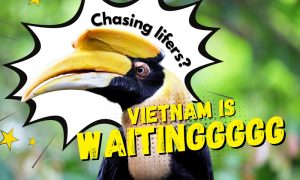
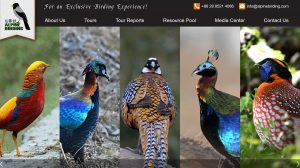
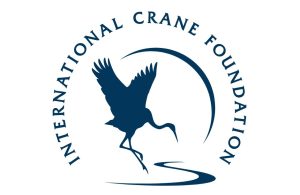
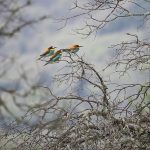
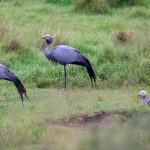


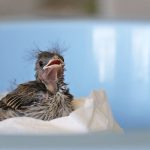
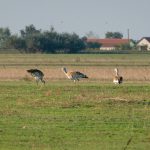

Leave a Comment